Being a responsible car owner goes hand in hand with proactive maintenance. However, delving into the world of car mechanics and understanding the essential parts can feel overwhelming. To make informed decisions about your vehicle’s upkeep and repairs, it’s crucial to familiarize yourself with its key components, especially those hidden from plain sight, working tirelessly underneath your car.
One thing is certain: knowing which car parts, particularly those underneath, can become problematic if they malfunction is vital for safety and preventing costly repairs. Conversely, understanding which parts are relatively straightforward and inexpensive to maintain can save you time and money in the long run.
Gaining a solid understanding of the parts of your car, especially those underneath, empowers you to maintain them effectively and comprehend the associated costs.
Let’s embark on a journey to explore the often-unseen world beneath your vehicle. From the robust chassis to the intricate exhaust system, we’ll uncover the key components that form the anatomy of your car underneath, ensuring you’re well-informed about these critical elements.
Engine Components: The Powerhouse Foundation
Maintaining your engine in top condition is crucial for preserving your car’s value and minimizing running costs. Many of these vital components are located in the lower engine bay, contributing to the car’s undercarriage structure.
Cylinder Block and Pistons: The Heart of Combustion
At the core of the engine, often nestled low within the car’s frame, lies the cylinder block. This robust structure serves as the engine’s foundation, housing individual cylinders – hollow tubes where controlled combustion takes place. These cylinders are key Parts Of A Car Underneath, impacting weight distribution and structural integrity.
Within these cylinders, pistons, secured by piston rings, move in an up-and-down motion. This movement is fundamental to converting the explosive energy from combustion into the driving force that propels your vehicle forward. The precise interaction between pistons and cylinders is the primary mechanism for generating automotive power, a process happening deep within the car’s undercarriage.
Crankshaft and Camshaft: Orchestrating Motion
Also integral to the engine’s inner workings, and positioned within the engine block near the bottom, are the crankshaft and camshaft. The crankshaft is a rotating shaft that transforms the linear, up-and-down motion of the pistons into rotational energy. This rotational energy is the driving force that ultimately powers the wheels, originating from deep within the car’s structure.
Simultaneously, the camshaft, typically located above the crankshaft but still within the engine block, manages the precise timing of valve openings. These valves control the intake of air and fuel and the exhaust of gases, ensuring seamless and efficient combustion. Together, the crankshaft and camshaft synchronize the internal combustion events with meticulous movements, contributing to the smooth and propulsive motion of the car, all originating from the engine’s lower section.
Intake and Exhaust Manifolds: Breathing In and Out
These vital components, often positioned on the sides of the engine block, can be thought of as the lungs of your car, managing the crucial flow of air for combustion and the expulsion of exhaust gases. The intake manifold draws in oxygen from the air intake system, feeding it into the cylinders for combustion. This airflow management starts high in the engine bay but connects to the engine block located lower down.
Conversely, the exhaust manifold collects spent gases from the cylinders after combustion and directs them into the exhaust system, eventually expelling them out of the vehicle. This expulsion process begins near the engine and continues along the underside of the car via the exhaust pipes. Together, these manifolds optimize the engine’s performance, ensuring a balanced blend of power and efficiency, managing the crucial gas exchange process that underpins the car’s movement. It’s important to note that intake and exhaust manifolds are not present in electric vehicles, which operate on a different propulsion principle.
Powertrain and Gearboxes: Transferring Power to the Wheels
The gearbox, a critical part of a car underneath, particularly in manual vehicles, should operate smoothly and be maintained carefully to ensure efficient power transfer.
Different Types of Gearboxes (Transmission): Managing Speed and Torque
The gearbox, also known as the transmission, is a critical component in the powertrain system, located underneath the car and responsible for managing the engine’s power output to the wheels. Different types of gearboxes offer varying levels of driver control and automation.
Manual Gearboxes: Driver Control at Your Fingertips
Manual gearboxes provide the driver with direct control over the car’s gears. These systems require the driver to manually engage and disengage gears using a clutch pedal and gear stick. This manual control allows drivers to adapt to diverse driving conditions, such as varying road surfaces, acceleration needs, and deceleration requirements. Manual gearboxes are a key part of a car underneath, directly connected to the driveshaft.
Automatic Gearboxes: Seamless and Effortless Shifting
Automatic gearboxes simplify driving by automatically shifting gears smoothly without driver intervention. This eliminates the need for a clutch pedal or manual gear stick operation. Inside an automatic gearbox, a torque converter, a fluid coupling mechanism, ensures smooth gear changes and power transfer. Automatic transmissions are also positioned underneath the car, forming a crucial link in the powertrain.
CVTs: Continuous and Efficient Acceleration
Continuously Variable Transmissions (CVTs) represent a sophisticated evolution in gearbox technology. Utilizing a system of pulleys and belts, CVTs offer an infinite range of gear ratios. This design results in seamless and continuous acceleration, eliminating the stepped gear changes found in traditional gearboxes. CVTs are engineered to optimize fuel efficiency and dynamically adapt to changing driving conditions, making them a high-performance and fuel-conscious choice. Like other gearboxes, CVTs are located underneath the vehicle, contributing to the car’s undercarriage assembly.
Differential and Driveshaft: Distributing Power Evenly
Within the car’s power system, located centrally underneath the vehicle, the differential and driveshaft collaborate to perform distinct yet interconnected roles. The driveshaft acts as a rotating component that transmits power generated by the transmission towards the wheels. This power transfer occurs along the length of the car’s undercarriage.
The differential, on the other hand, is crucial for ensuring that power is distributed evenly to the wheels, particularly when the car is turning. It allows the outer wheels to rotate faster than the inner wheels during a turn, preventing wheel slippage and ensuring smooth cornering. Together, the driveshaft and differential create a harmonious system for the car’s motion, enabling efficient and controlled movement. These parts are essential parts of a car underneath, directly involved in power delivery to the wheels.
Clutch and Torque Converter: Engaging and Disengaging Power
In the realm of gears and transmission systems, the clutch and torque converter play vital roles in managing power flow. In manual transmissions, the clutch enables the driver to engage and disengage gears with precision, providing direct control over power delivery. The clutch mechanism is located between the engine and gearbox, often in the lower central part of the car.
In automatic transmissions, the torque converter smoothly transfers power from the engine to the transmission, ensuring seamless gear shifts. This fluid coupling mechanism contributes to a smoother driving experience. The torque converter is integral to the automatic transmission unit, also situated underneath the car. Both the clutch and torque converter are essential for managing power flow within the powertrain, components found within the car’s underbelly.
Fuel and Ignition Systems: Igniting the Drive
The fuel system in your internal combustion engine car is absolutely critical and must be in optimal working order to prevent dangerous breakdowns. Fuel lines and tanks are often routed and positioned underneath the vehicle.
Fuel Injection System: Precise Fuel Delivery
A cornerstone of modern engines, the fuel injection system ensures optimal combustion by precisely delivering fuel into the engine cylinders. Fuel injectors, key components of this system, spray a fine mist of fuel directly into the intake manifold or cylinders, enhancing fuel efficiency and power output. The fuel injection system replaces older carburetor technology, which was prone to breakdowns due to clogging and wear. Fuel injectors offer superior fuel distribution, improved engine performance, and reduced emissions, contributing to a more efficient and cleaner combustion process. Fuel lines for this system often run along the undercarriage of the car.
Spark Plugs and Ignition Coils: Initiating Combustion
The ignition system, comprising spark plugs and ignition coils, works in concert to ignite the air-fuel mixture within the engine cylinders. Spark plugs generate the electric spark required for combustion, while ignition coils amplify the voltage from the car’s electrical system to create a spark strong enough to ignite the mixture. The synchronized operation of spark plugs and ignition coils is crucial for efficient and rapid ignition, which is essential for optimal engine performance, responsiveness, and fuel economy. While spark plugs are located within the engine, the wiring for the ignition system is often routed through the engine bay and sometimes along the car’s frame.
Throttle Body and Air Intake System: Regulating Airflow
The throttle body and air intake system collaborate to precisely control the airflow into the engine. The throttle body, a valve located in the intake system, regulates the amount of air entering the engine based on the driver’s accelerator pedal input. The air intake system ensures a clean and efficient supply of air to the engine, filtering out dust and debris. Working together, the throttle body and air intake system manage the engine’s “breathing,” a critical aspect for achieving peak power, fuel efficiency, and overall engine performance. The air intake system starts higher in the engine bay, but components like the throttle body are often positioned lower down, closer to the engine block.
Cooling and Lubrication: Maintaining Optimal Temperature and Smooth Operation
Radiator and Cooling Fans: Preventing Overheating
The radiator and cooling fans serve as the primary defense against engine overheating in internal combustion engine vehicles. The radiator, typically positioned at the front of the car but connected to the engine via coolant hoses running underneath, dissipates heat from the engine coolant. Cooling fans enhance airflow through the radiator, expelling excess heat and ensuring efficient cooling. Together, the radiator and cooling fans maintain the engine at an optimal operating temperature, safeguarding against engine damage and promoting efficient performance. Coolant lines are important parts of a car underneath, circulating vital fluids.
Water Pump and Hoses: Circulating Coolant
Two additional cooling system components crucial for regulating engine temperature are the water pump and hoses. The water pump circulates coolant throughout the engine and cooling system, absorbing heat generated by combustion. Hoses provide pathways for the coolant to flow between the engine, radiator, and other cooling system components. The water pump is usually mounted on the engine block, while hoses are routed throughout the engine bay and sometimes underneath the car.
EV Battery Cooler System: Thermal Management for Electric Vehicles
Electric vehicles (EVs) employ a different cooling system specifically designed to manage the temperature of the battery pack and electric motor. The battery cooler, analogous to a traditional radiator in function, dissipates heat from the battery coolant. The cooling system enhances airflow around the battery pack and motor, expelling excess heat and maintaining optimal operating temperatures. In EVs, maintaining precise temperature control is vital for maximizing the longevity and efficiency of the battery and electric motor. EV battery cooling systems are often integrated into the undercarriage of the vehicle to manage battery temperature effectively.
Oil Pump and Oil Filter: Ensuring Lubrication and Cleanliness
The oil pump circulates engine oil throughout the engine, ensuring that all moving components are adequately lubricated for smooth and friction-free operation. Simultaneously, the oil filter removes impurities and contaminants from the engine oil, preserving oil quality and engine health. Together, the oil pump and oil filter extend engine life and maintain optimal engine performance. The oil pan, located at the very bottom of the engine and containing the oil pump, is one of the lowest parts of a car underneath.
Electrical System: Powering the Vehicle’s Functions
Your car’s electrical system is central to all vehicle functions, from the engine’s operation to interior accessories. Wiring harnesses are often routed along the car’s undercarriage to connect various systems.
Battery: The Initial Power Source
The car battery serves as the vehicle’s primary electrical energy source, providing the initial power to start the engine and supporting all electrical functions when the engine is not running. Importantly, all cars, including EVs, utilize batteries. A faulty or low-capacity battery will require replacement to ensure reliable vehicle operation. Batteries are typically located in the engine bay or trunk, but battery cables often run along the car’s frame.
Alternator: Recharging and Powering
The alternator is a crucial component that converts mechanical energy from the engine’s rotation into electrical energy. This generated electricity recharges the battery while the engine is running and simultaneously powers the car’s electrical system, including lights, infotainment, and other accessories. The alternator regulates the voltage output to maintain a consistent electrical supply, preventing battery overcharging and ensuring that electrical components receive the correct amount of power. The alternator is engine-mounted and connected to the electrical system via wiring harnesses.
Starter Motor and Solenoid: Initiating Engine Start
The starter motor and solenoid work together to initiate engine start-up. The solenoid, an electromagnetic switch, activates the starter motor when the ignition key is turned. The starter motor then engages with the engine’s flywheel, turning the crankshaft to kickstart the combustion process. This coordinated effort converts electrical energy into mechanical motion to begin engine operation. The starter motor is typically mounted to the engine block, often in a lower position.
Wiring Harness and Fuses: Distributing and Protecting Electrical Power
The wiring harness serves as the network that channels electricity throughout the vehicle, connecting various electrical components and systems. Fuses, strategically placed within the wiring harness, act as safety devices, protecting against electrical overloads and short circuits. Together, the wiring harness and fuses ensure a safe and organized flow of electrical power, preventing potential malfunctions and safeguarding the entire electrical network. Wiring harnesses are often routed along the car’s chassis and undercarriage to connect components throughout the vehicle.
Suspension and Steering: Ensuring Ride Comfort and Control
Achieving smooth and easy vehicle maneuverability requires a complex suspension and steering system. Many of these components are located underneath the car, directly interacting with road conditions.
Shock Absorbers and Struts: Damping Vibrations and Ensuring Stability
Shock absorbers and struts are fundamental components of a car’s suspension system, located directly above and around the wheels, underneath the car. Shock absorbers, typically two per wheel, are designed to dampen shocks and vibrations from uneven road surfaces, providing a smoother ride by controlling vertical wheel movement.
Struts, often found at the front and sometimes rear, combine structural support and shock absorption functions. They contribute to vehicle stability and handling. Together, shock absorbers and struts enhance driving comfort by mitigating the impact of bumps and uneven roads, ensuring a more stable and enjoyable ride. These are key parts of a car underneath, directly impacting ride quality and handling.
Control Arms and Bushings: Maintaining Alignment and Handling
Within the chassis and suspension system, control arms and bushings play crucial roles in providing stability and smooth handling. Control arms are hinged suspension links that connect the suspension to the car’s frame or chassis, allowing controlled wheel movement. Bushings, made of flexible material, are inserted into the control arm joints, providing flexibility and absorbing vibrations.
This combination of control arms and bushings effectively absorbs road imperfections, maintains proper tire alignment, and ensures a balanced and controlled ride. These components are essential for the suspension’s function and are located underneath the car.
Power Steering Pump and Rack: Effortless Maneuvering
The power steering pump and rack are essential for responsive and effortless steering. The power steering pump generates hydraulic pressure, which is then used by the power steering rack to assist in turning the wheels. The power steering rack converts hydraulic pressure into controlled motion, making steering easier, particularly at low speeds and during parking maneuvers. Together, they provide precise and smooth maneuverability, enhancing ease of navigation on the road. The power steering rack is located in the front undercarriage of the car, while the pump is typically engine-driven and connected via hydraulic lines.
Braking System: Ensuring Safe Deceleration
The braking system is a finely-tuned area of your vehicle. Components like brake lines and calipers are positioned near the wheels and underneath the car, crucial for safety.
Brake Pads: Friction for Stopping Power
Brake pads are frictional components that are pressed against the brake rotors to create the friction needed to slow down or stop the vehicle. Typically made of composite materials, brake pads convert kinetic energy into heat, facilitating controlled deceleration. Their robust design ensures reliable braking performance when the brake pedal is applied, contributing significantly to both safety and the longevity of the braking system. Brake pads are subject to wear over time, especially with frequent or aggressive braking, and require periodic replacement. They are located within the brake calipers, close to the wheels.
Brake Calipers: Applying Pressure to the Rotors
Brake calipers are situated around the brake rotors and house pistons. When hydraulic pressure from the brake master cylinder is applied, these pistons clamp the brake pads onto the rotor. This clamping action generates the necessary friction for controlled deceleration. The precision of brake calipers ensures responsive and reliable braking performance, contributing directly to overall driving safety. Brake calipers are located at each wheel, forming a critical part of the braking system.
Exhaust System: Managing Emissions and Noise
Your car’s exhaust system is as important as any other system. Ensuring it’s running cleanly and emitting minimal pollutants is key, making the maintenance of exhaust parts crucial. The entire exhaust system runs along the underside of the car.
Catalytic Converter: Reducing Harmful Emissions
The catalytic converter, a key component in modern internal combustion engine vehicles, is designed to reduce harmful emissions. Located within the exhaust system underneath the car, the catalytic converter transforms toxic gases like carbon monoxide, hydrocarbons, and nitrogen oxides into less harmful substances through chemical catalysis. This ingenious device significantly reduces vehicle emissions, contributing to cleaner air and improved environmental health, making it an essential component for emission compliance in automotive systems.
Muffler and Resonator: Quieting and Tuning Exhaust Sounds
The muffler and resonator work together in a car’s exhaust system to manage noise levels and refine exhaust sound. The muffler’s primary function is to reduce engine noise, dampening sound waves and minimizing exhaust noise output. The resonator fine-tunes sound frequencies, adjusting the exhaust note and eliminating unwanted frequencies. A well-functioning muffler and resonator contribute to a more comfortable and less intrusive driving experience. The exhaust system, including the muffler and resonator, runs along the undercarriage of the car.
Oxygen Sensors: Monitoring Exhaust Composition
Oxygen sensors are positioned within the exhaust system, typically before and after the catalytic converter. These sensors monitor the oxygen levels in the exhaust gases. This crucial data is transmitted to the engine control unit (ECU), the car’s computer. The ECU uses this information to precisely adjust fuel injection, optimizing combustion efficiency and minimizing emissions. Oxygen sensors play a vital role in ensuring optimal engine performance and environmental compliance. They are integrated into the exhaust system, a key part of a car underneath.
Interior Components: Comfort and Convenience Within the Cabin
While interior components are not “underneath” the car, they contribute to the overall driving experience and vehicle value.
Seats & Their Belts: Occupant Support and Safety
Seats are designed for occupant comfort and support, available in various materials, designs, and configurations. Seat belts are essential safety devices, securing occupants during travel and in the event of a collision. Modern seat belts often incorporate features like pretensioners, which tighten the belt in a sudden stop, and force limiters, which reduce the force exerted on the occupant’s chest.
Dashboard & Steering Functions: Driver Command Center
The dashboard serves as the driver’s visual command center, displaying essential vehicle information such as speed, fuel level, engine temperature, and warning lights. It provides a comprehensive overview of the car’s operational status, ensuring driver awareness. The steering wheel integrates power-assisted steering components and various controls for vehicle functions, including indicators, wipers, headlights, and multimedia systems, placing essential controls within easy reach of the driver.
Exterior Components: Shaping the Vehicle’s Form and Function
Exterior components, while not “underneath,” define the car’s appearance and contribute to aerodynamics and protection.
Features & Controls on Doors: Access and Convenience
The features and controls integrated into car doors enhance convenience, safety, and user experience. Standard features include electric window controls, door locks (manual or power-operated), and mirror adjustments. Many modern vehicles incorporate advanced features such as keyless entry systems and power-operated doors, streamlining vehicle access and operation.
Wheels and Tyres: Connecting to the Road
Types of Tyres and Their Functions
| Type of tyre | Function |
|---|---|
| Summer tyres | Designed for warm weather conditions, providing optimal grip and handling in both dry and wet conditions. |
| Winter tyres | Engineered for cold climates, featuring specialized tread patterns and rubber compounds for enhanced traction on snow and ice. |
| All-season tyres | Versatile tyres suitable for a wide range of weather conditions, balancing traction and durability in both wet and dry environments. |
| Performance tyres | Designed for sporty driving, prioritizing exceptional handling, grip, and responsiveness at higher speeds. |
| Off-Road tyres | Built for challenging terrains, featuring rugged treads and reinforced sidewalls for superior traction and durability on unpaved surfaces. |
| Run-flat tyres | Equipped with reinforced sidewalls that allow drivers to continue driving at reduced speeds for a limited distance after a puncture. |
| Touring tyres | Focused on providing a smooth and comfortable ride, ideal for long-distance journeys with low road noise and good handling characteristics. |
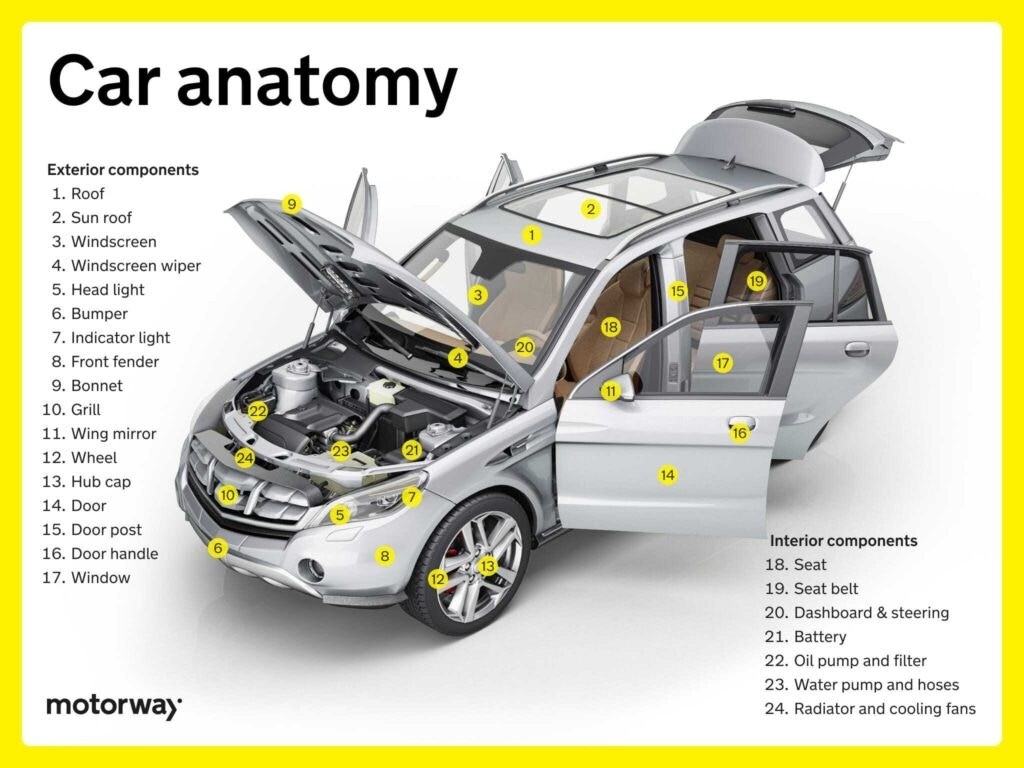
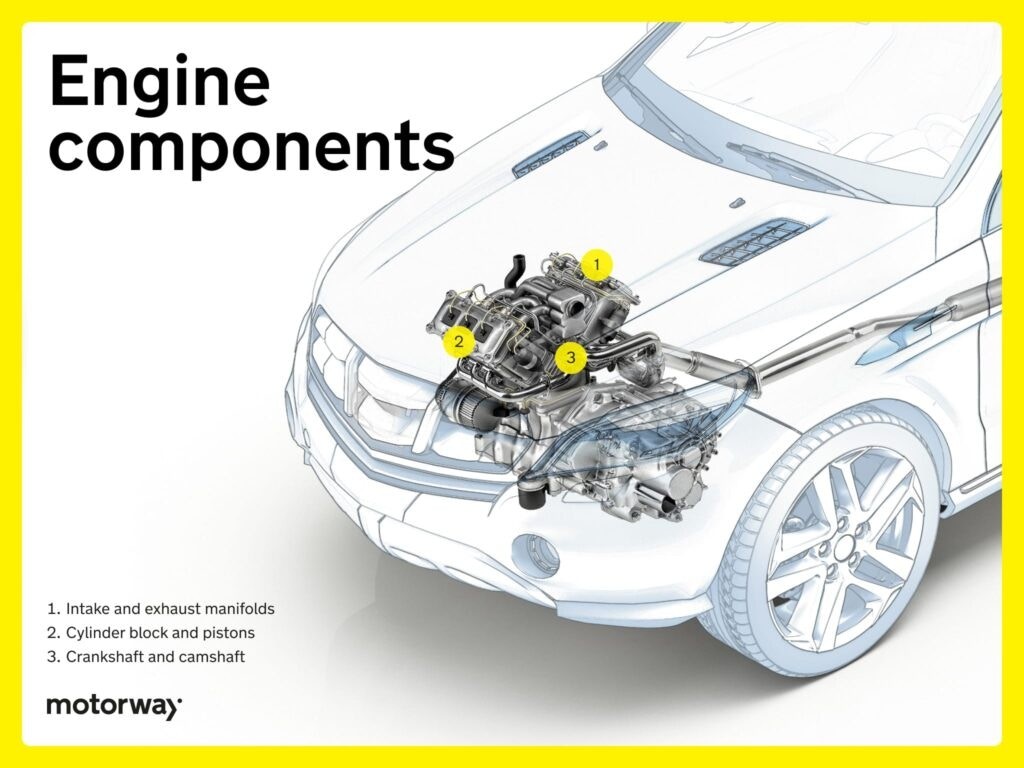
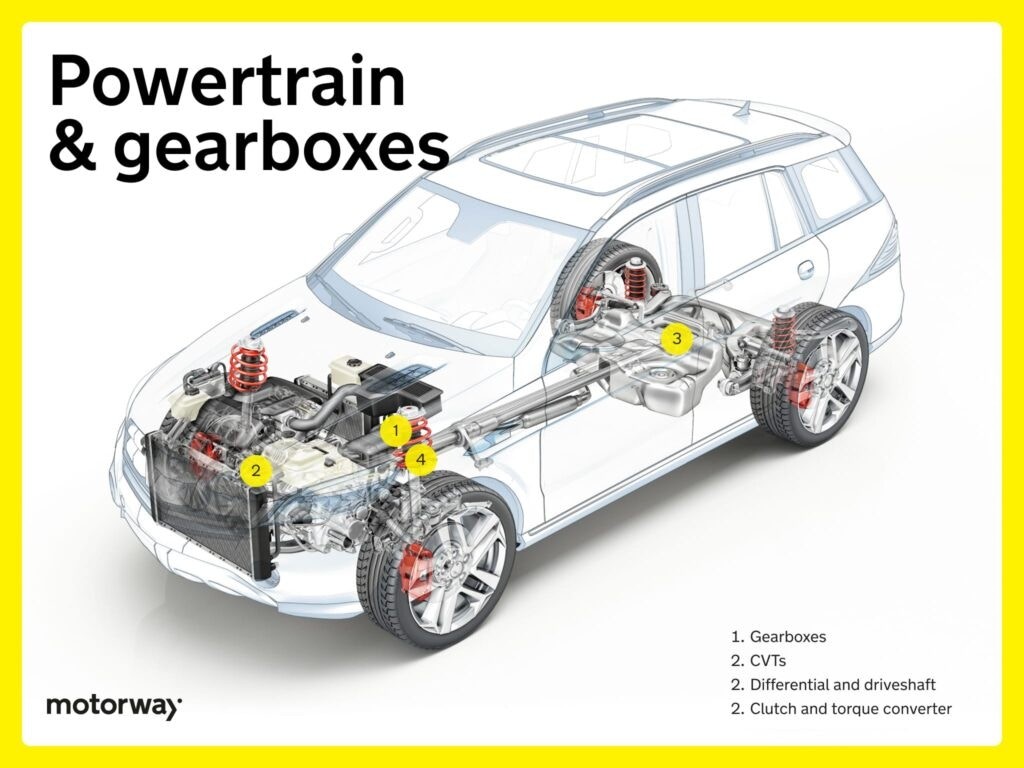

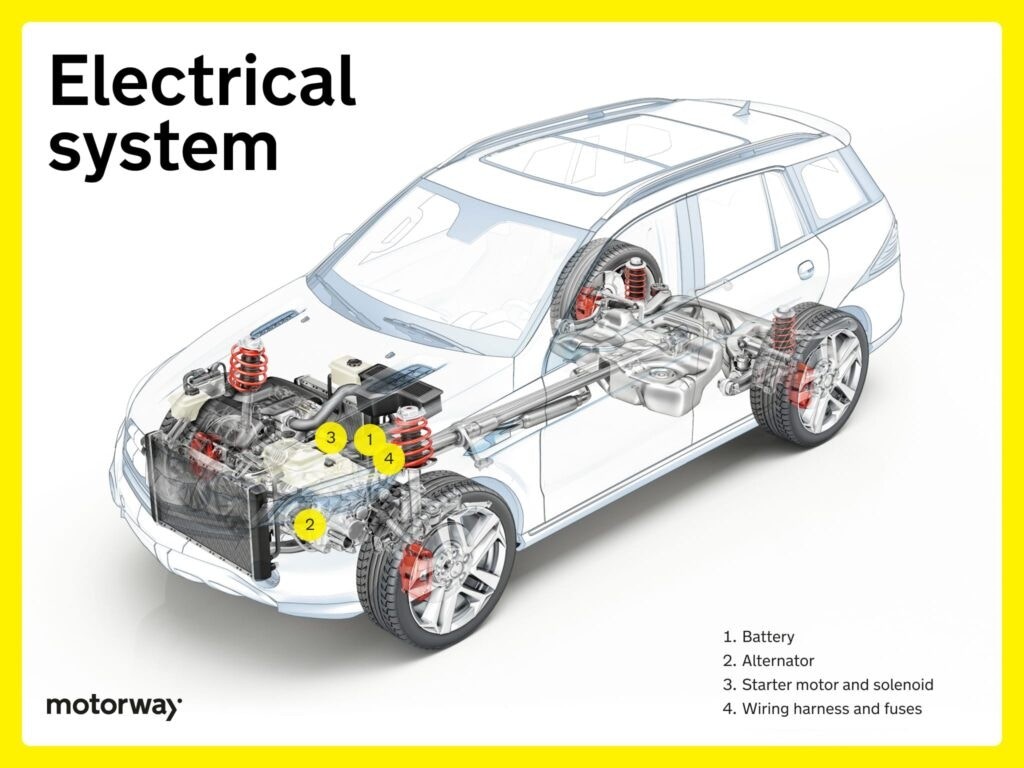

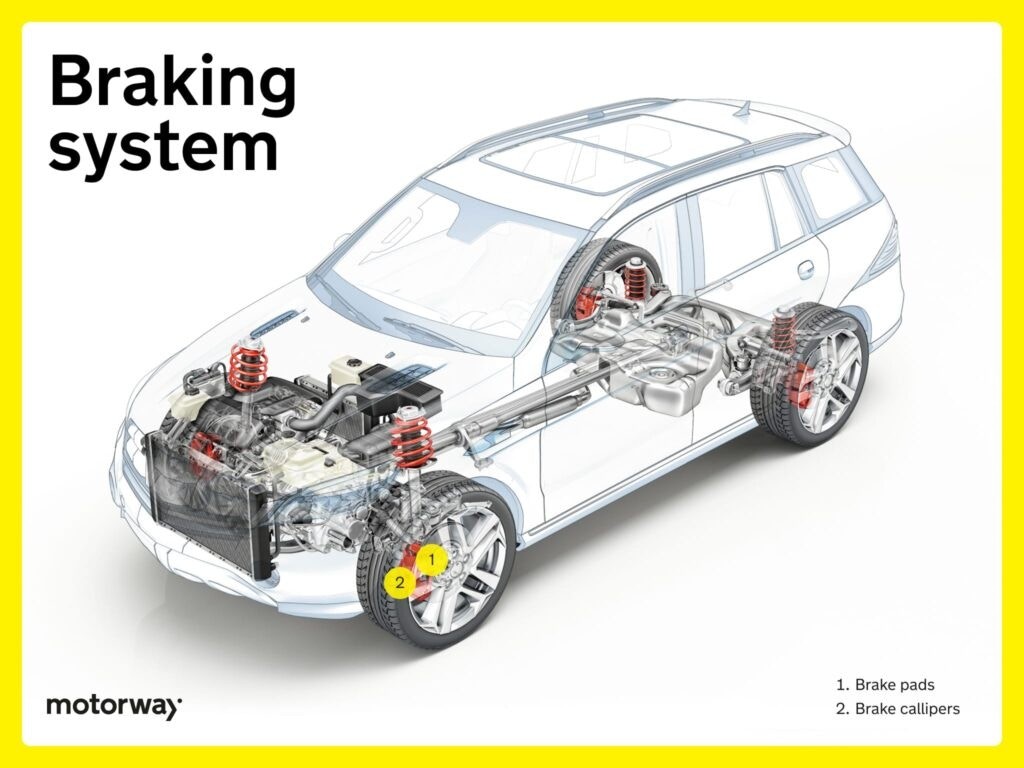
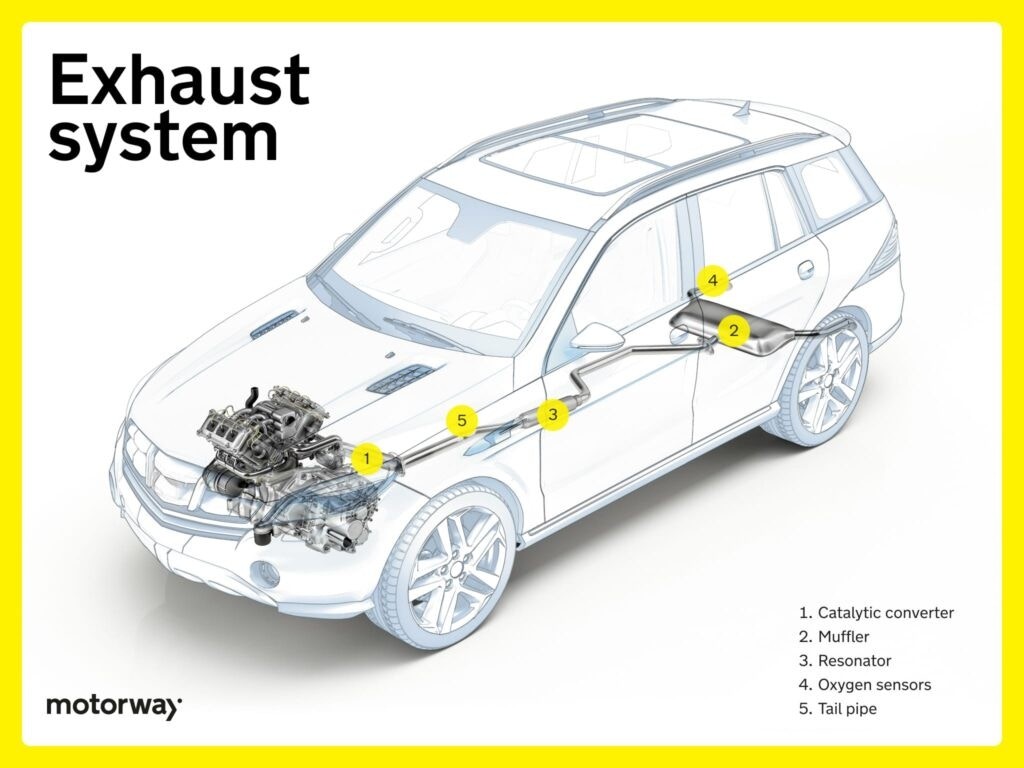
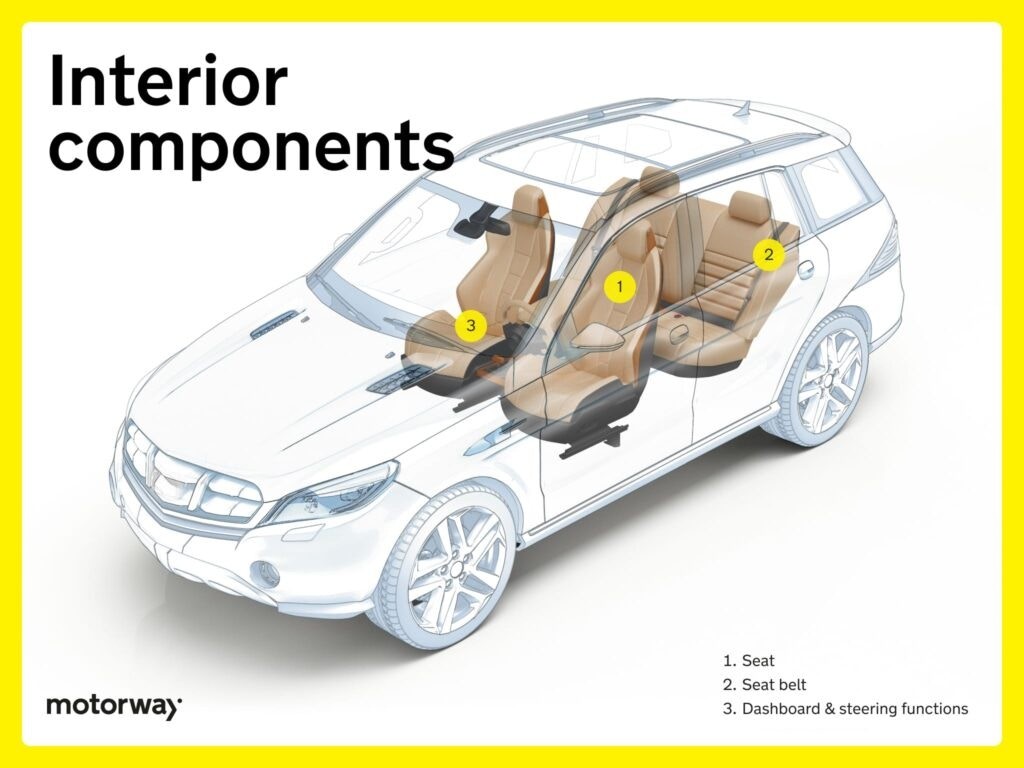
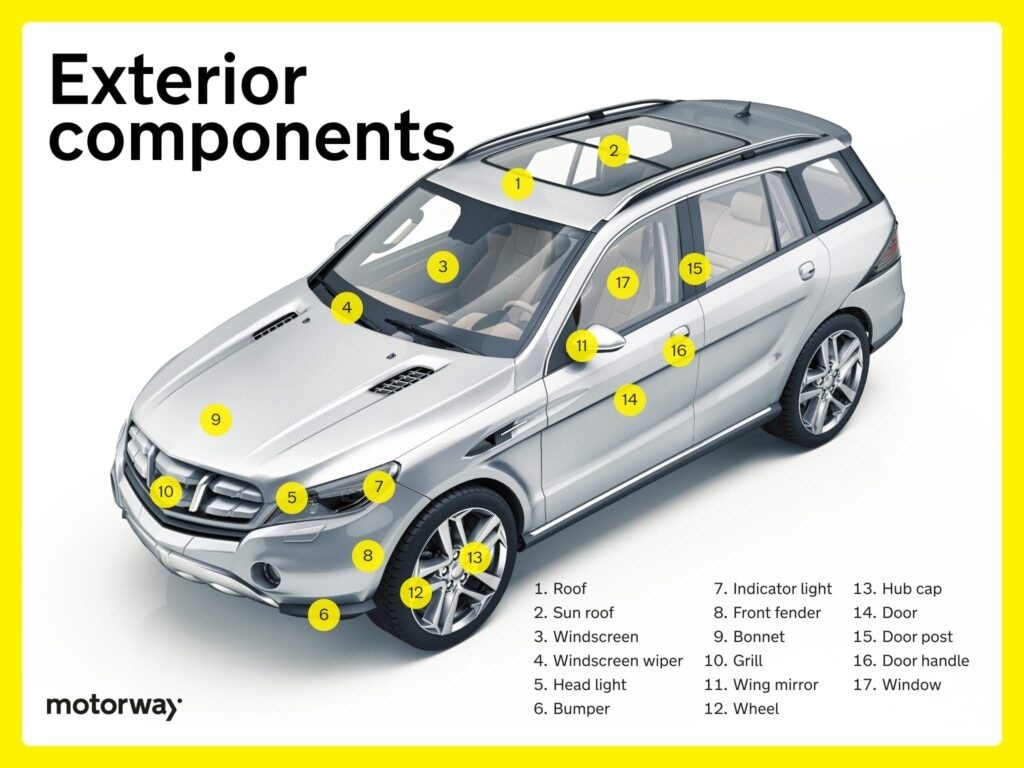
Wheel Construction Guide: Alloy vs. Steel Wheels
Wheel construction involves various designs and materials, impacting performance and aesthetics:
- One-piece construction: The wheel is formed from a single piece of material, typically alloy or steel, offering simplicity and structural integrity.
- Two-piece construction: The wheel consists of two main parts, the center and the outer rim, joined together, often found in performance or custom wheels.
- Three-piece construction: The wheel is composed of three separate pieces: the center, outer rim, and inner hoop, allowing for greater customization in aftermarket applications.
- Forged construction: Forged wheels are manufactured from a solid piece of metal compressed under high pressure, resulting in lighter and stronger wheels, often used in high-performance and racing applications.
- Multi-piece construction: These designs combine multiple components, offering versatility in sizing and customization options.
Material choices also impact wheel characteristics:
- Alloy wheels: Made from a blend of metals, typically aluminum or magnesium, alloy wheels are lightweight, enhancing heat dissipation and vehicle aesthetics.
- Steel wheels: Constructed from steel, steel wheels are robust and durable, although heavier than alloy wheels, making them suitable for rugged driving conditions and cost-effective options.
Tyre Pressure Monitoring System (TPMS): Maintaining Optimal Inflation
The Tyre Pressure Monitoring System (TPMS) is a crucial safety feature that continuously monitors tire air pressure using sensors in each tire. TPMS transmits real-time pressure data to the vehicle’s computer, issuing warnings to the driver if tire pressure deviates from optimal levels. Maintaining proper tire inflation promotes safety, optimizes fuel efficiency, and extends tire lifespan.
FAQs About Car Parts Underneath
What parts are under a car?
Underneath a car, you’ll find essential systems and components including the engine, transmission, suspension system, exhaust system, driveshaft, differential, fuel tank, and various control arms and linkages. These parts work interdependently to ensure the vehicle’s functionality, performance, and safety.
How many car parts are on a car?
The total number of parts in a modern car can exceed 30,000 individual components, encompassing a wide array of systems and subsystems. This vast number highlights the intricate engineering and complexity involved in automotive design and manufacturing. Electric vehicles (EVs) generally have fewer parts compared to internal combustion engine cars due to their simpler powertrain designs.
What are the important parts of a vehicle?
Crucial vehicle parts include the engine, transmission, braking system, steering system, suspension system, electrical system, and safety features like airbags and seatbelts. Each of these systems and components plays a vital role in ensuring the vehicle’s safe, reliable, and efficient operation.
What parts of a car can be sold separately?
Various car components can be sold individually in the aftermarket, including engines, transmissions, body panels (doors, hoods, fenders), wheels, tires, seats, and specific electrical parts like alternators and starters. The demand and availability of these parts vary depending on vehicle make, model, and condition.
Why is there a shortage of car parts?
Car part shortages can arise from several factors, including disruptions in global supply chains, increased demand for specific components (e.g., semiconductors), manufacturing challenges, natural disasters, and geopolitical events that impact production and distribution networks.
Need to Sell Your Car?
Want to explore more about car ownership, maintenance, and the process of selling your car? Discover our comprehensive guides here, covering topics from Clean Air Zones and car tax to plate changes and part exchange, empowering you with knowledge for every stage of car ownership.